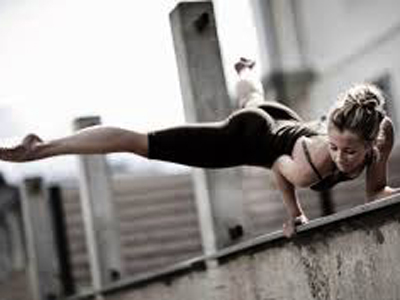Resistance training (or strength/weight training), as defined by The Better Health Channel[i], is the use of resistance to muscular contraction to build strength, anaerobic endurance and size of skeletal muscle.
The average person might associate weight training with bodybuilding, strongman competitions, Arnold Schwarzenegger, and the place in the gym where all the guys look in the mirror while they lift heavy shit and grunt.
But resistance training is an essential part of any well-balanced training schedule, whether you’re an athlete, bodybuilder or the average Mary Smith looking to lead a healthier, fitter life. The benefits of resistance training are almost endless but here are just a few.
Resistance Training protects bone and muscle mass and prevents injury
Without focused strength maintenance, we lose 2.5kg of muscle mass every decade after age 30[ii]. Our bones also lose minerals, as we grow older, making them more brittle and prone to fractures. By completing just 2 strength sessions a week, you can ward off and even reverse the natural loss of muscle and bone density that occurs during the aging process. It’s never too late to start! Even the elderly will see notable changes in beginning resistance training.
Strong muscles, tendons and bones are also less likely to give way when disrupted – decreasing the likelihood of strain and injury.
Given the above, you can see why it is so important to maintain a regular resistance training regime to maintain a great quality of life as we get older (where we often the effects of no strength training in joint replacements from simple falls and lack of strength and bone density).
To this end the elderly will see notable changes in beginning resistance training. People with disabilities can also enjoy this benefit under the capacity building support budget of their NDIS plan, which may cover services such as NDIS exercise physiology, occupational therapy, and physiotherapy to promote strength and overall well-being.
It will enable you to complete everyday tasks with greater ease
Strong muscles and tendons will enable you to carry out your daily activities with greater ease, things like carrying the shopping bags, picking up the kids, climbing stairs and lifting things above your head will become easier with greater strength.
Resistance training can help reduce back pain
The way you move every day is dependent on how strong your core is – a network of muscles through your neck, shoulders, back, hips and abdominals. Improving the strength in these areas enables you to sit and stand with a better posture. This often results in reduced back pain.
It can improve your flexibility
Flexibility is improved by engaging joints in their full range of motion, reducing the risk of muscle strains and sprains.
Strength training can help you “Lose Weight” (Lose Fat)
When clients come to me, wanting help to lose weight, I always ask them; what kind of exercise do YOU think will help you lose weight? And most, especially women, will tell me heaps of ‘Cardio’ – Treadmil, Bike, Rower, Cross-trainer. In fact, I’ve found that unless the client has previously trained with a personal trainer, most people have done very little strength training whatsoever in the past.
Most women are under the illusion that strength training will make them ‘bulk up’ and ‘look like a guy’. This is not true. The thing with the way guys look when they bulk up is that they have testosterone their side, a primary hormonal driver for muscle growth. As a woman, unless you’re taking steroids with testosterone, we simply don’t have enough testosterone in our bodies to achieve the same results as men. Take ballet dancers and gymnasts for example – all extremely strong athletes who are not what you’d call ‘bulked up’.
Let’s have a think about the role of muscle in our bodies. In order to lose weight we need to burn more calories (or eat less calories, or a combination of the two). What part of the body is responsible for helping us to burn calories? Yes, muscle.
Muscle mass is the ‘engine’ of the calorie-burning machine that is your body. As you build muscle and strength, your engine becomes more efficient at burning calories and helps you lose fat. The higher your muscle mass, the more calories you’ll burn even when just resting (this is a result of a boosted metabolism created by increased muscle mass).
 This is why ‘weight-loss’ can be a controversial topic. Quite often I’ll see clients shift very little in weight on the scales but lose centimetres around the waist, hips, thighs and arms. This is due to a body composition change – muscle has been gained and fat has been lost. Muscle is denser than fat, which means it occupies less space. Therefore we see a visible reduction in body shape. This is why I prefer to talk about ‘fat loss’ rather than ‘weight loss’.
This is why ‘weight-loss’ can be a controversial topic. Quite often I’ll see clients shift very little in weight on the scales but lose centimetres around the waist, hips, thighs and arms. This is due to a body composition change – muscle has been gained and fat has been lost. Muscle is denser than fat, which means it occupies less space. Therefore we see a visible reduction in body shape. This is why I prefer to talk about ‘fat loss’ rather than ‘weight loss’.
Strength training doesn’t have to mean lifting heavy items in front of a mirror in the gym. There are countless great bodyweight exercises that help improve strength. Check out this Bodyweight Strength Workout for a great full-body introduction to strength training. You could also use resistance bands to provide the resistance you need here are two great workouts you can do with resistance bands (1), (2).
[i] Resistance Training – health benefits http://www.betterhealth.vic.gov.au/bhcv2/bhcarticles.nsf/pages/Resistance_training_the_health_benefits?open sited 15/3/15
[ii] Weil, Richard. 2014. Why Do Resistance Exercise? http://www.emedicinehealth.com/strength_training/page4_em.htm#why_do_resistance_exercise sited 16/3/15

